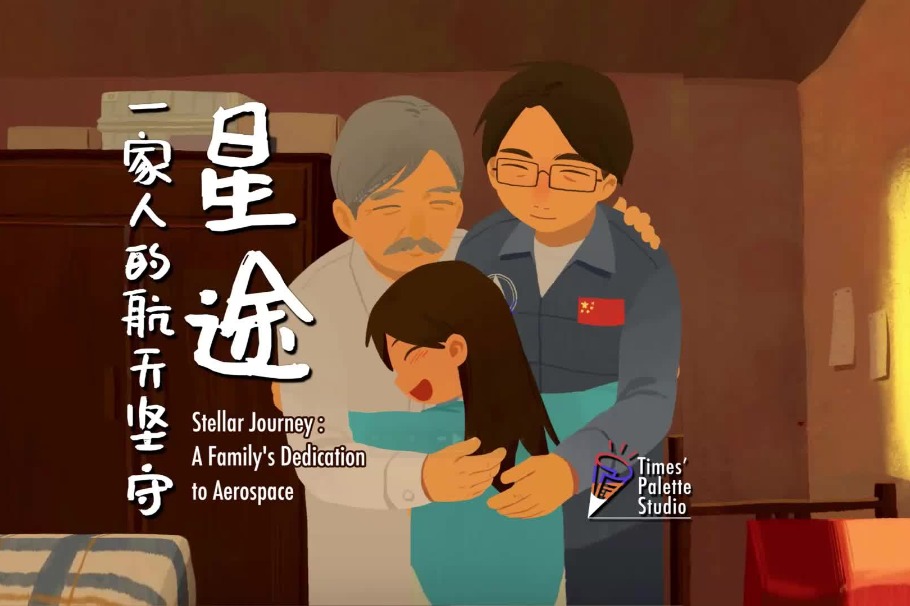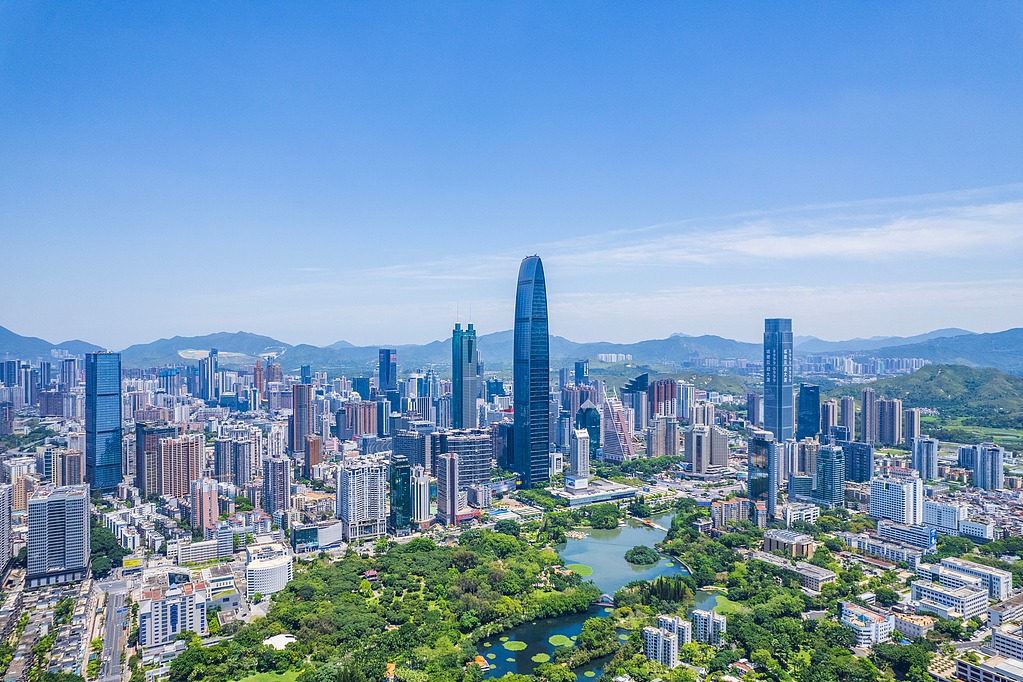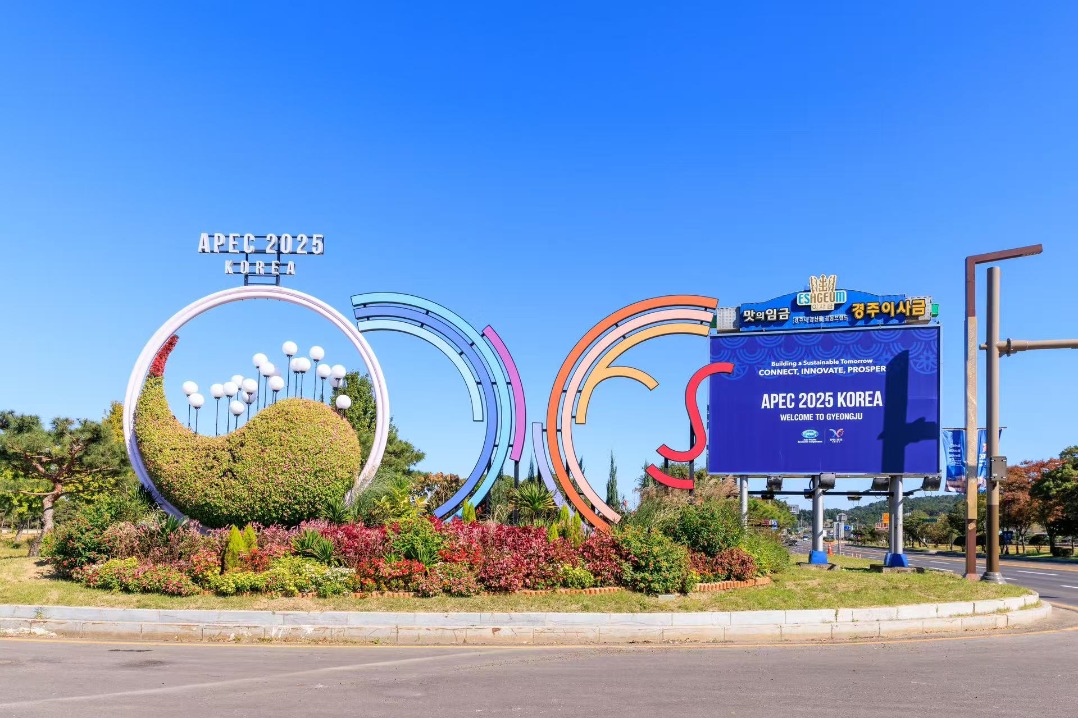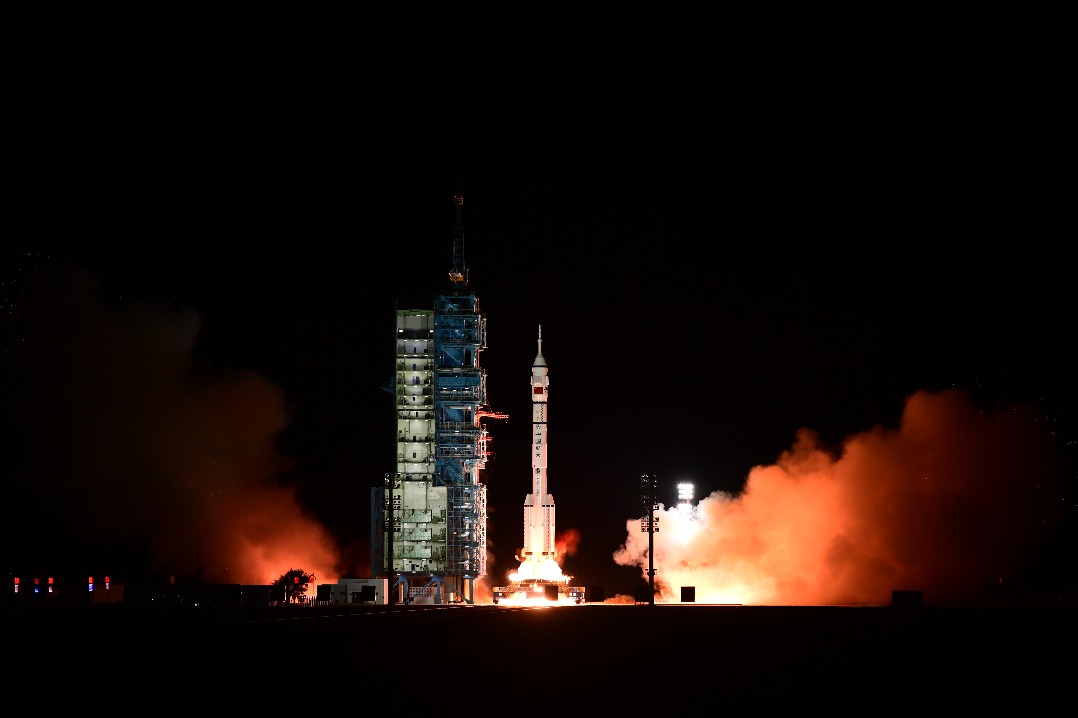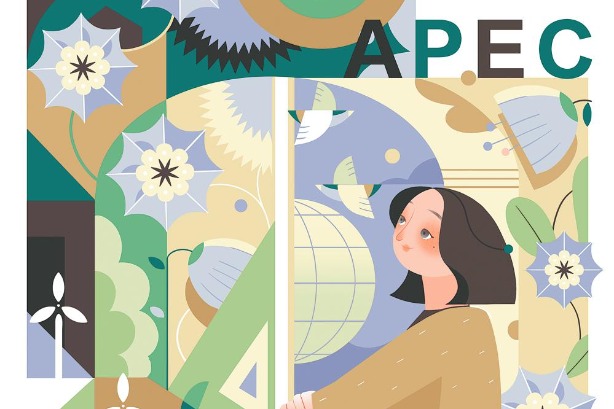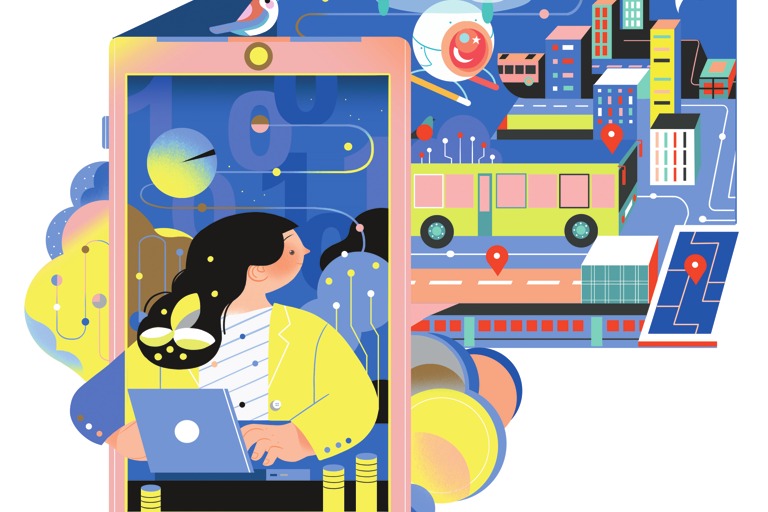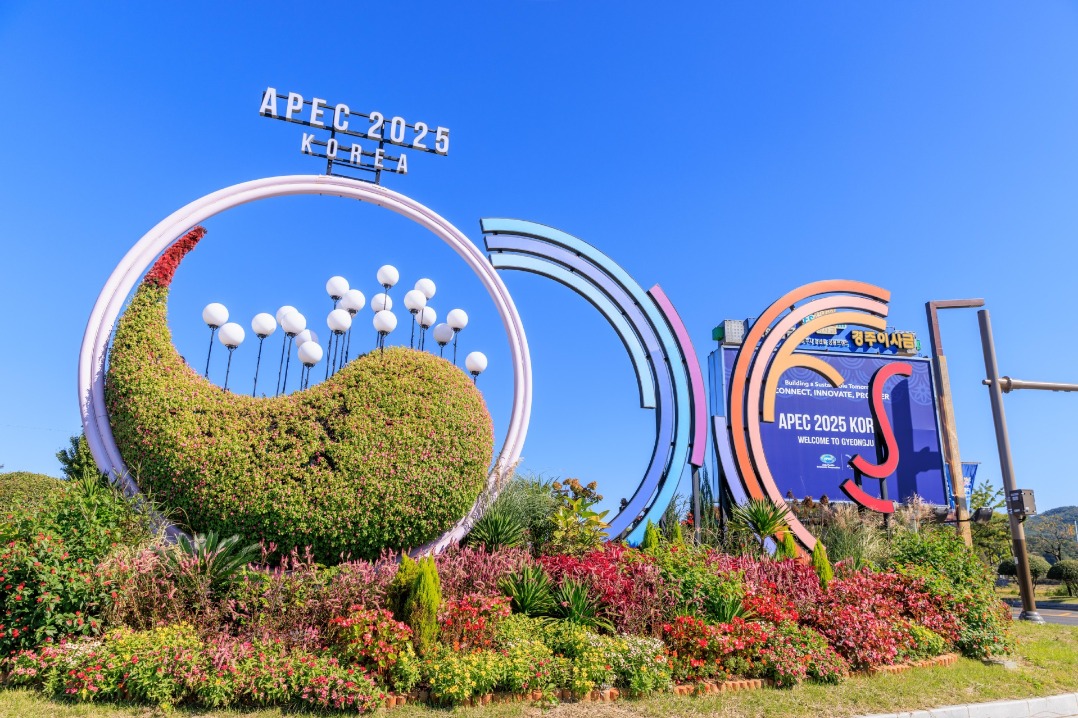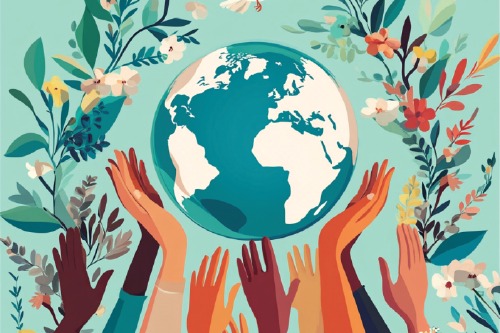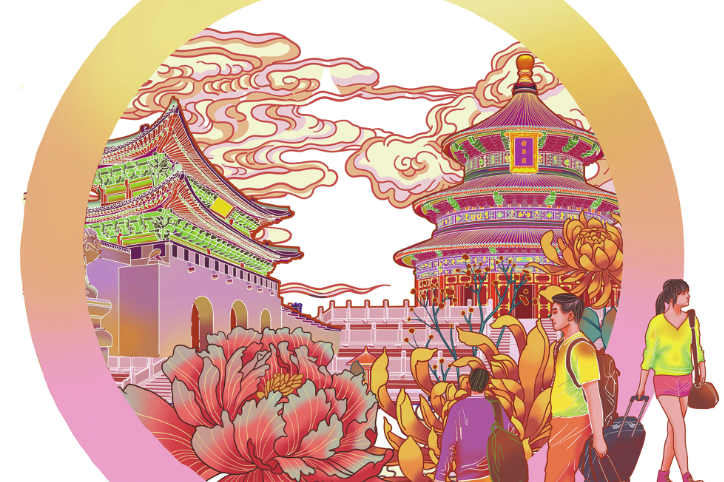Xinjiang performance sparks nostalgia for Silk Road


I was filled with an outpouring of nostalgia for the ancient Silk Road as charming ladies from the Uyghur and Kazakh ethnic groups performed at the Xinjiang Great Theater. Titled “Back to the Silk Road”, the performance featured cultural interaction, commercial exchange and religious rituals between merchants and nations along the ancient Silk Road.
Besides transcontinental business, the Silk Road – named for the lucrative silk carried across its length – played a significant role in the development of civilizations, linking diverse communities across long distances, and diffusing culture and religion, most notably Buddhism and Islam. Cultural interaction and people-to-people contacts are the lasting legacy of the Silk Road, and it has been termed the “Road of Dialogue” in the UNESCO Plan. To successfully communicate, traders had to learn the languages and traditions of the countries they traveled through. A number of travelers ventured onto the Silk Road simply to have cultural and intellectual exchanges.
Exhibition of musical culture:
With musical heritage, one will feel a strong bond to thousands of years of exchanges among the peoples of the Silk Road lands. Performers hummed tunes with soft voices in Xinjiang Great Theater to show the spread of musical culture on the trading network and the link between today’s culture and that of the ancients.

For centuries, people traveling along the Silk Road carried with them their commodities, music, poetry and stories, which led to the incredible integration of Asian, Mediterranean and European cultures. Absorbing new types of music facilitated the spread of musical styles and instruments beyond their lands of origin. For example, a musical instrument with many strings, the “kithara/cithara” (also known as the guitar and zither) is of ancient Greek origin, which is now played widely across the world. Meanwhile, from Istanbul to Xinjiang Uyghur autonomous region, the highest artistic aspirations of urban musicians were realized in the performance of classical or court music known as maqam, which is popular in the Urumqi, Kashgar, Aksu, and Hotan regions of Xinjiang. During the performance of maqam music, words appeared on the screen saying that maqam was “introduced from the royal court to folk and enjoyed popularity among the masses till now”. It also said that “The Ring Dance” was “introduced from the west through the ancient Silk Road”.
Sufis, dervishes, and religious storytellers are said to convey their religious tenets and moral values through mystical chants and sacred dances to people gathered in bazaars, inns and tea houses on the trade route.
Islam is not the only great religion to be symbolized in musical life along the Silk Road, Buddhism also created monastic chants, which, like maqam, exist in a variety of local and regional traditions bound by common spiritual ideals. They celebrated their festive events through playing music.
Human societies have to preserve traditional music since it is the telltale vestige of an ancient lifestyle and historical identity, and a cultural relic of our forefathers.
Illustration of religious integration:
To show how commercial activities along the Silk Road facilitated the transmission not just of goods but also ideas and culture, mainly in the areas of religions, the performers acted out Buddhist rituals.

Religious integration has been one of the highly significant legacies of the Silk Road. People embraced each other’s religions to live a peaceful life. The footprints of Islam and Buddhism are widely seen in China as traders built shrines and temples of their own faiths wherever they traveled to maintain their beliefs.
Sufis could sell their Islamic faith – which accommodated religious tolerance, peaceful coexistence, and spiritual life – to a large number of individuals along the trade route.
Buddhism and Buddhist art also represent one of the most vivid examples of this integration. The transmission of Buddhism to China via the Silk Road began in the first century AD. Buddhism was widely embraced by merchants for its appealing moral and ethical teachings. With the voluntary conversion of Chinese ruling elites, Buddhism became widespread in China.
Buddhist art and shrines are found in the Afghan province of Bamyan and its Chinese sister city of Gansu, as well as in Southwest China’s Sichuan province, where last year I visited the Giant Buddha and Mount Emei Temple and Mogao Caves. Meanwhile, on my trip to Gannan Tibetan autonomous prefecture, an important passageway on the ancient Silk Road, local officials briefing journalists about the number of religious edifices said there were 123 Tibetan Buddhist monasteries, three Han Buddhist temples, three churches, and 61 mosques. All religious buildings were located in a neighborhood reflecting religious tolerance and harmony among the followers of different religions.
It should be noted that the arts had great impact on the development of Buddhism, and Buddha is said to be first depicted as human in the Kushan period. A mixture of Greek and Indian elements are found in later Buddhist art in China and throughout the countries along the Silk Road. Meanwhile, religions in general and Buddhism in particular had a profound influence on the cultural traditions of ancient China. I have observed the prosperity of cultural communion in temples, cave murals and museums in different parts of China, including Sichuan, Gansu, and Xinjiang.
Overall, the distinguishing feature of the repertoire in the Xinjiang Great Theater was its narrative quality, as it illustrated the cultural symbiosis, religious integration, and intellectual exchanges of the nations and caravans on the Silk Road.
The Silk Road spirit:
The Belt and Road Initiative proposed by Chinese President Xi Jinping in 2013 to revive the ancient trade network carries the spirit of the Silk Road – peace, cooperation, openness, inclusiveness, mutual learning and mutual benefit.
Intercultural and heart-to-heart exchanges, reiterated by Chinese officials, are highly significant in the globalized world. Since we live in “the global village”, members of the human family need to have not only material exchanges but also cultural and intellectual interaction. The BRI, it is believed, will strengthen regional and global exchanges and bring nations closer to one another.
This “Road of Dialogue” will pave the ground for communication and mutual understanding, create room for religious tolerance and peaceful coexistence, and promote the “culture of dialogue” between nations.
It is believed that if regional and global states take active participation in the revival of the Silk Road in the frame of the BRI, besides promoting global trade and “freedom from fear and want”, harmonious interaction and the spirit of the brotherhood will be ensured and historical legacy and cultural relics safeguarded.
Since a peaceful and prosperous society has been proclaimed as the highest aspiration of the common people, each and every member of the human family has to support global trade and connectivity, multilateral cooperation, and cultural exchanges through siding with the BRI – which will be conducive to building a community of shared future for mankind, where all individuals and nations will be able to live a free, peaceful, and dignified life, regardless of their racial, cultural, and religious backgrounds. To put it succinctly, the dream of nations will come true and the spirit of the Silk Road will be revived by the BRI.
Or, as the performers put it, “Thousands of years have passed like a dream. Dreaming back to the ancient state of the western regions, we seem to be passing across the universe of time.”
The author is an Afghan journalist and freelance writer.
The opinions expressed here are those of the writer and do not necessarily represent the views of China Daily and China Daily website.
















